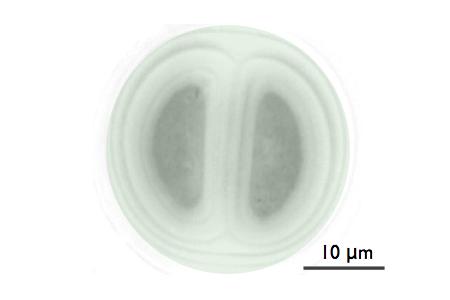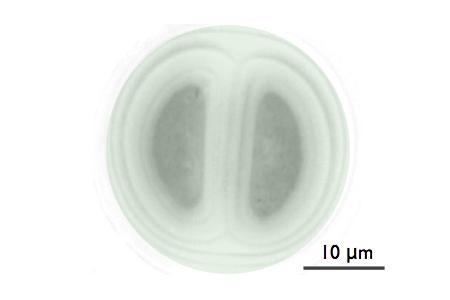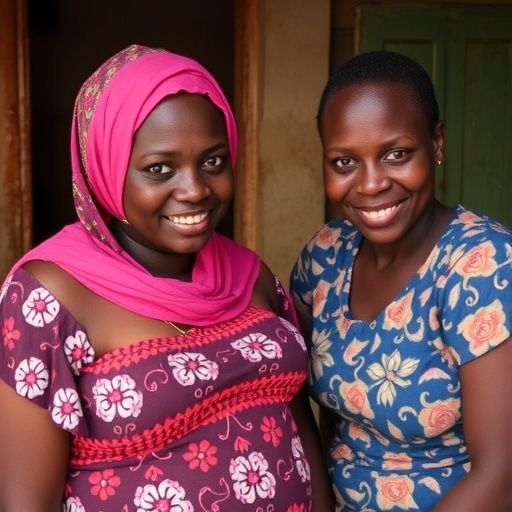
Credit: Fischer Laboratory/Caltech
The ability to generate oxygen through photosynthesis–that helpful service performed by plants and algae, making life possible for humans and animals on Earth–evolved just once, roughly 2.3 billion years ago, in certain types of cyanobacteria. This planet-changing biological invention has never been duplicated, as far as anyone can tell. Instead, according to endosymbiotic theory, all the "green" oxygen-producing organisms (plants and algae) simply subsumed cyanobacteria as organelles in their cells at some point during their evolution.
"Oxygenic photosynthesis was an evolutionary singularity," says Woodward Fischer, professor of geobiology at Caltech, referring to the process by which certain organisms use the energy of sunlight to convert carbon dioxide and water into sugar for food, with oxygen as a by-product. "Cyanobacteria invented it, and then ultimately become the chloroplasts of algae. Plants are just a group of algae that moved on land."
Yet as world-shaping as cyanobacteria are, relatively little is known about them. Until a couple of decades ago, they were called "blue-green algae" by taxonomists, though it was later revealed that they are not algae at all, but rather a completely different type of organism. That lack of taxonomic understanding made deciphering the riddle of their evolution all but impossible, Fischer says.
"For the longest time, they were just their own group. We had no answer about where they came from, or what other organisms they were related to," Fischer says. "Imagine trying to understand something about human evolution without knowledge of the great apes."
Publishing in the journal Science on March 30, Fischer and colleagues from Caltech and the University of Queensland in Australia finally have fleshed out cyanobacteria's family tree. They added the genomes of 41 uncultured microorganisms, which helped to pin down the precise point in the evolution of cyanobacteria at which oxygenic photosynthesis arose. The 41 species are all types of cyanobacteria but none carry genes for photosynthesis, and therefore they don't produce organic matter, like algae and plants do. Rather, they consume it.
Fischer and his colleagues found that a single branch of cyanobacteria–dubbed Oxyphobacteria–were likely the first and only group to evolve oxygenic photosynthesis. Their closest relatives, Melainabacteria, live in the guts of animals (including humans) among other environments, and do not produce oxygen. And while one might suggest that Melainabacteria simply lost the ability to produce oxygen over time, the next most closely related cyanobacteria after those, described in the paper as Sericytochromatia, also do not engage in oxygenic photosynthesis.
"This nails down that Oxyphobacteria were really the only ones to ever invent this globe-shaping chemical process," Fischer says.
The 41 new species fall into both Melainabacteria and Sericytochromatia, the latter of which had not been described before this paper. All names of these organisms are subject to change, as taxonomists catch up with the team's discoveries. "We know they're there, and we know their gene repertoire. Now we can start putting them into evolutionary trees, and begin efforts to isolate them and study their physiology and ecology," says James Hemp, an Agouron Postdoctoral Scholar at Caltech when the research was conducted, and coauthor of the Science article.
These discoveries were made thanks to new technology that allows researchers to sequence the genome of an organism without first having to isolate that organism in the lab and culture a large quantity of it, as has been required in the past.
"Now we have culture-independent ways of assessing microbial diversity," says Rochelle M. Soo, postdoctoral researcher at the University of Queensland in Australia and coauthor of the Science article. "We can go into any environment, remove a sample of DNA, sequence it, and recover genomes of microbes living in that environment. We don't have to grow anything ourselves–instead we let the environment do the work and just sequence what's already there." Some of the 41 new species were found in situ, such as in the intestines of animals, while others came from the databases of other biology studies–which had been sampled, but never characterized and analyzed.
Unraveling the evolutionary mystery of photosynthesis and its genesis could shed light on everything from sustainable energy sources to the potential for life to exist on other planets.
"Cyanobacteria are planetary-scale engineers, capable of splitting water. They invented the most challenging chemistry on the face of the planet. We would love to be able to do their water-splitting chemistry as effortlessly as they do to make fuels, and these guys figured out how to do it two and a half billion years ago," Fischer says.
Next, the team plans to learn more about the ecology and physiology of the new bacteria by probing them in a lab. "We've really just scratched the surface," Fischer says.
###
The study is titled "On the origins of oxygenic photosynthesis and aerobic respiration in Cyanobacteria." It can be found online at http://science.sciencemag.org/content/355/6332/1436. Coauthors include Donovan H. Parks and Philip Hugenholtz of the University of Queensland in Australia. This research was funded by a Discovery Outstanding Researcher Award, the Australian Research Council, the Agouron Institute, NASA, and the David and Lucile Packard Foundation. Sequencing data have been deposited at the National Center for Biotechnology Information.
Media Contact
Robert Perkins
[email protected]
626-395-1862
@caltech
http://www.caltech.edu
############
Story Source: Materials provided by Scienmag





